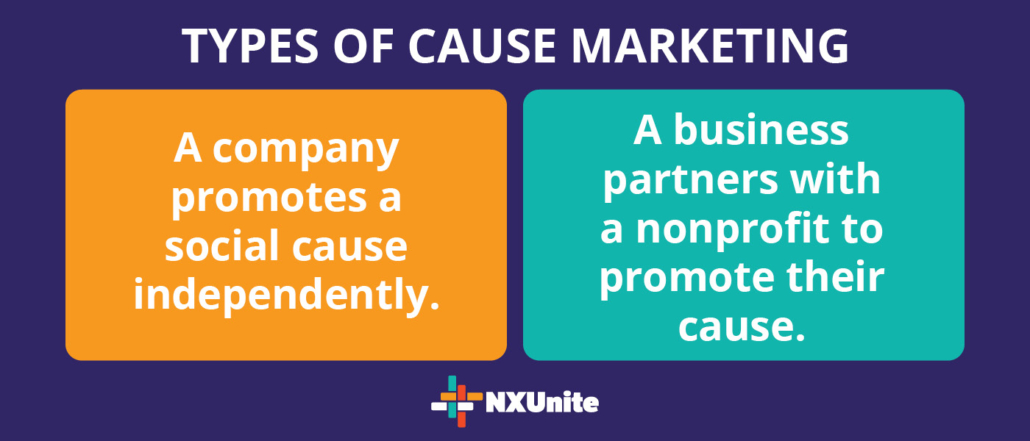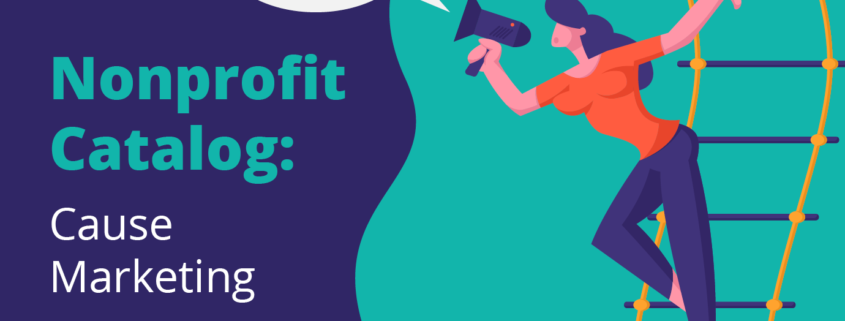Cause Marketing FAQ and Examples – Nonprofit Catalog
Now more than ever, people want the businesses they support to be socially responsible. In fact, 86% of consumers believe companies should take a public stance on social issues.
In response to these expectations, many companies are creating social responsibility programs to publicly give back. These programs can include volunteer grants for employees, matching gift programs, and cause marketing campaigns.
What is cause marketing?
Cause marketing, also referred to as cause related marketing, is a business practice in which a company publicly allies themselves with a social cause. Companies often choose a cause related to the product or service they sell, and they may partner with a nonprofit organization to promote their mission.
What are the types of cause marketing?
Companies use two main types of cause marketing:
- The business partners with a specific nonprofit organization to promote their work. They foster a mutually beneficial relationship in which the company gains the benefits of cause marketing and the nonprofit gets access to a wider audience.
- The business promotes a cause or runs a social good campaign independently. In this case, the company works to further a cause relevant to their product or service, without any direct involvement with a specific nonprofit.
These two variations can both yield positive results. Both types of cause marketing offer benefits for the corporation and any communities affected by the cause.

What are the benefits of cause related marketing?
Just as nonprofits work to create authentic, positive branding, for-profit companies need the public to perceive them well to generate sales. In addition to improving public perception of their brand, cause marketing can improve a company’s relationship with their audience, employee satisfaction, and brand loyalty.
Cause marketing also benefits nonprofits by giving them access to the company’s audience, leading to an increase in potential donors and funds.
Cause marketing examples
Before you get started with your own campaign, research successful cause related marketing examples to get a clear idea of the ways you can approach your campaign, such as:
- EyeBuyDirect’s Buy One Give One campaign: This prescription glasses company will donate a pair of glasses to someone in need for every purchase. Promoting accessible vision correctors clearly aligns with EyeBuyDirect’s product and improves their brand in the eyes of customers.
- Microsoft’s Nonprofit Ad Grants program: In recent years, Microsoft launched an initiative to give up to $3,000 of free online advertising to eligible nonprofits on a monthly basis. This program helps a wide range of nonprofits further their individual missions, and it showcases Microsoft’s commitment to helping nonprofits enact change.
These are just a few examples to give you an idea of the impact cause marketing can make. Research cause marketing initiatives from businesses in your sector to learn more specific ways that your industry impacts social good.
How to launch a cause marketing campaign
For companies
Feeling inspired? Spend some time brainstorming the types of social causes your company would be interested in marketing, then follow these steps:
- Determine a relevant cause to support.
- Evaluate your goals, budget, and audience preferences.
- Develop a plan for your involvement, including if you’ll partner with a nonprofit or work independently.
- Start promoting your campaign!
Once your campaign begins, make sure to encourage audience participation at every opportunity. Your customers or clients will be the driving force behind your cause marketing campaign, so target their interests and engage with them directly.
For nonprofits
Interested in finding a corporate sponsor to partner with? Research companies with social impact initiatives that align with your mission. Look for opportunities to start a relationship, and remember that both your organization and the business will benefit!
Additional Resources
- Nonprofit Catalog – Read up on more nonprofit essentials by exploring our Nonprofit Catalog
- A Spotlight on Top Impact Investors Driving Social Change – Discover how your company can take its impact further with help from popular impact investors.
- The Beginner’s Ultimate Guide to Nonprofit Marketing– For nonprofits, build a foundation for marketing your organization’s efforts and impact.


